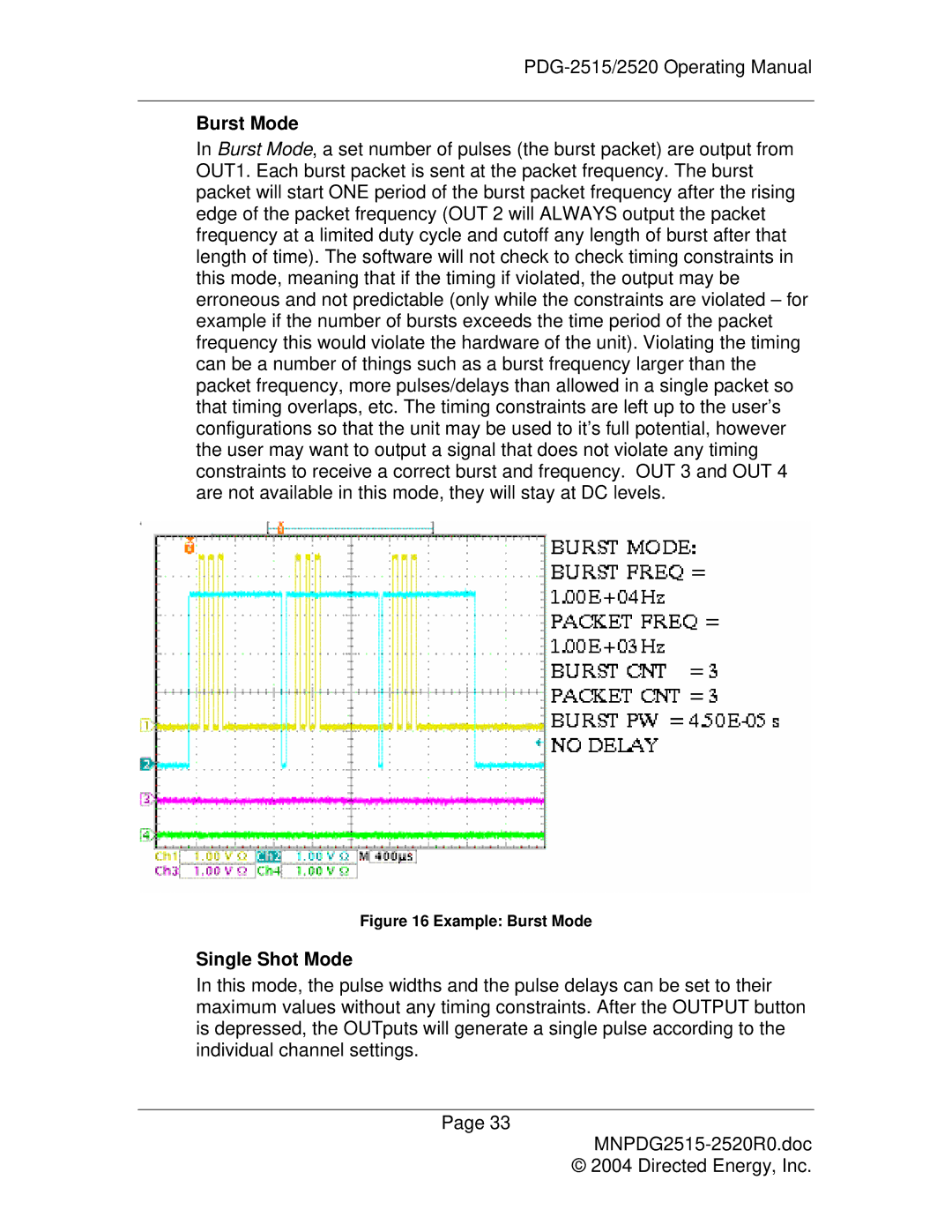
Burst Mode
In Burst Mode, a set number of pulses (the burst packet) are output from OUT1. Each burst packet is sent at the packet frequency. The burst packet will start ONE period of the burst packet frequency after the rising edge of the packet frequency (OUT 2 will ALWAYS output the packet frequency at a limited duty cycle and cutoff any length of burst after that length of time). The software will not check to check timing constraints in this mode, meaning that if the timing if violated, the output may be erroneous and not predictable (only while the constraints are violated – for example if the number of bursts exceeds the time period of the packet frequency this would violate the hardware of the unit). Violating the timing can be a number of things such as a burst frequency larger than the packet frequency, more pulses/delays than allowed in a single packet so that timing overlaps, etc. The timing constraints are left up to the user’s configurations so that the unit may be used to it’s full potential, however the user may want to output a signal that does not violate any timing constraints to receive a correct burst and frequency. OUT 3 and OUT 4 are not available in this mode, they will stay at DC levels.
Figure 16 Example: Burst Mode
Single Shot Mode
In this mode, the pulse widths and the pulse delays can be set to their maximum values without any timing constraints. After the OUTPUT button is depressed, the OUTputs will generate a single pulse according to the individual channel settings.
Page 33
© 2004 Directed Energy, Inc.
